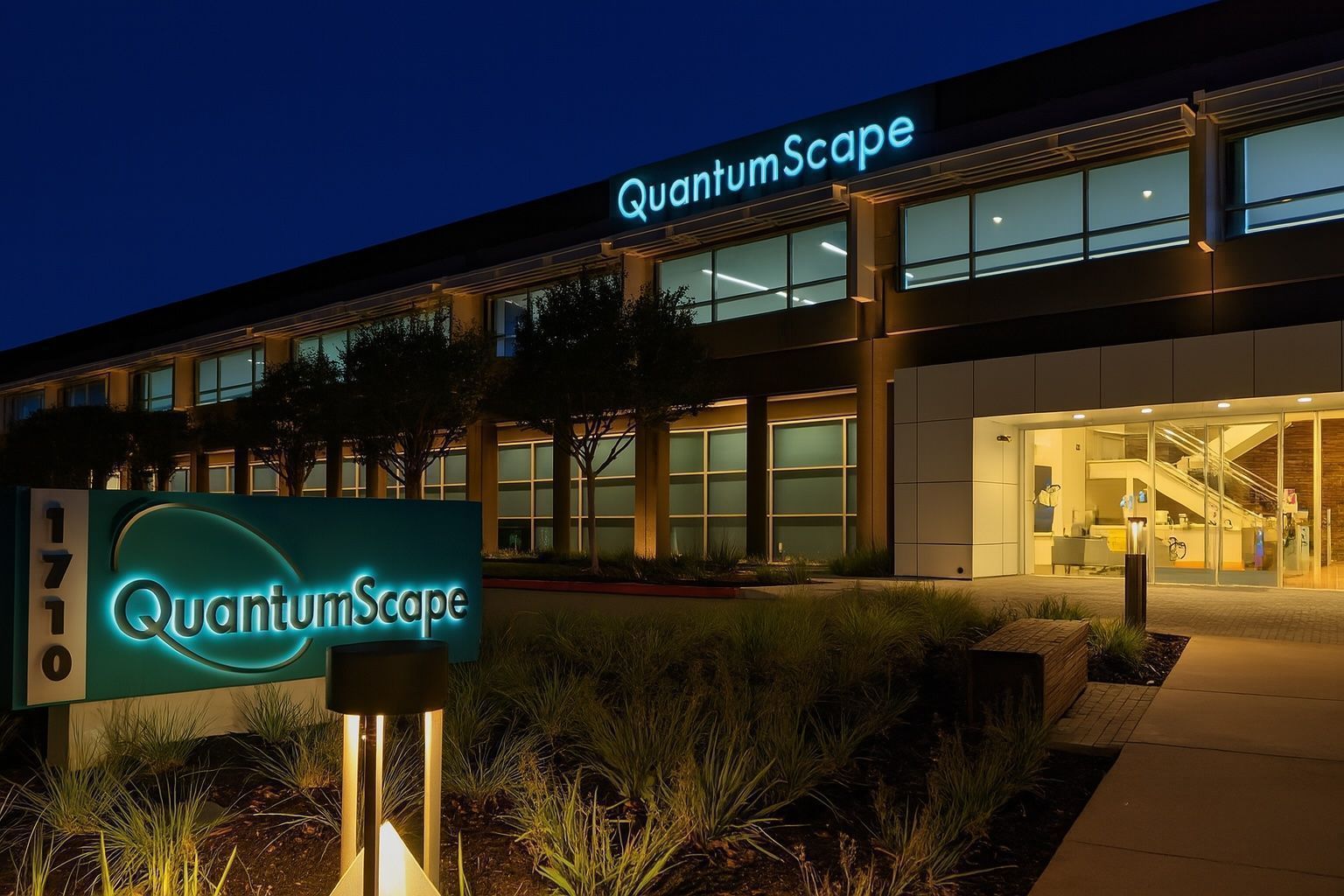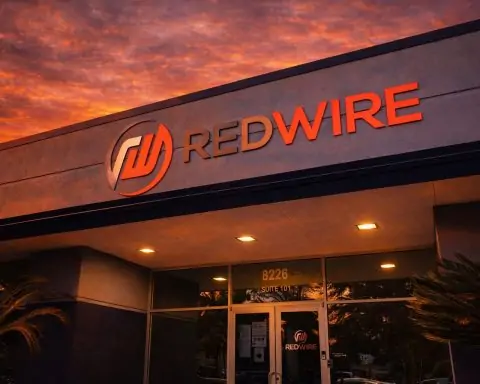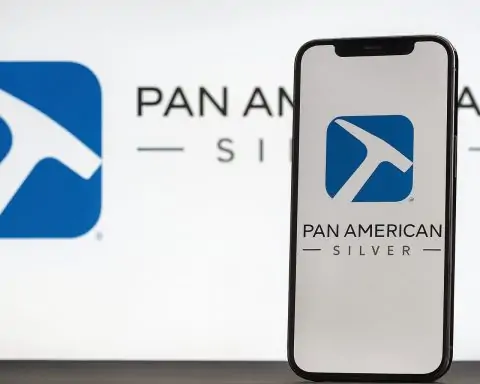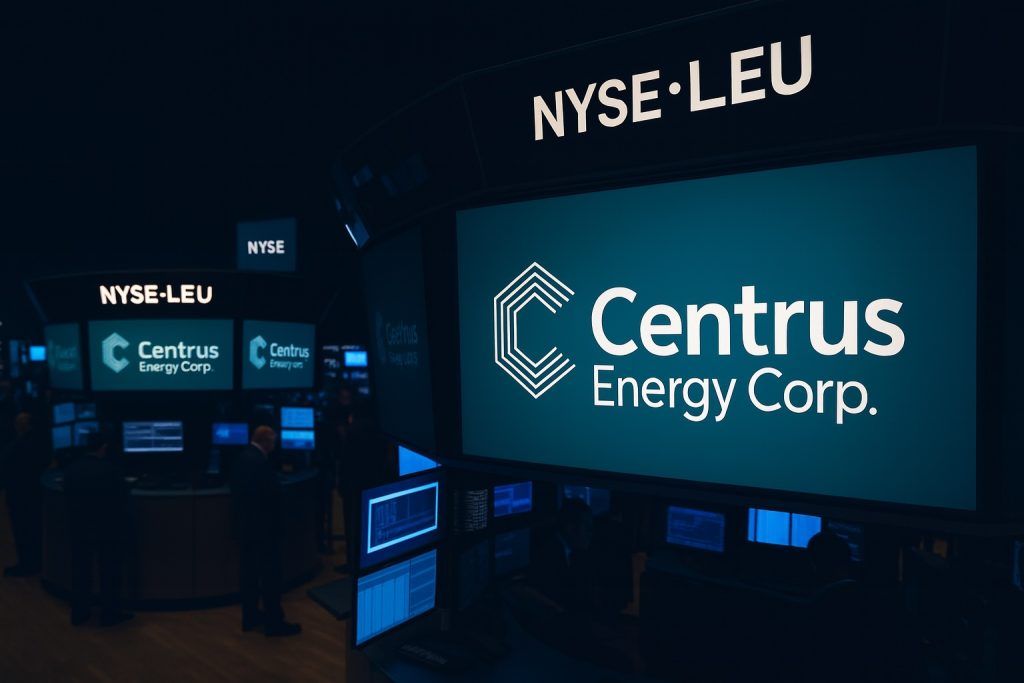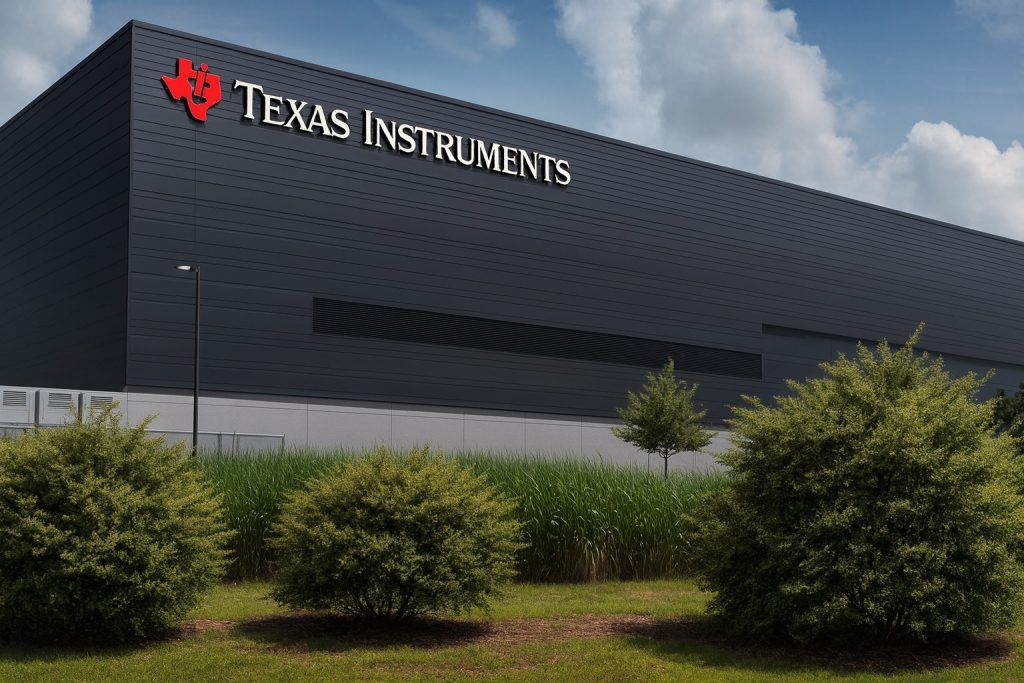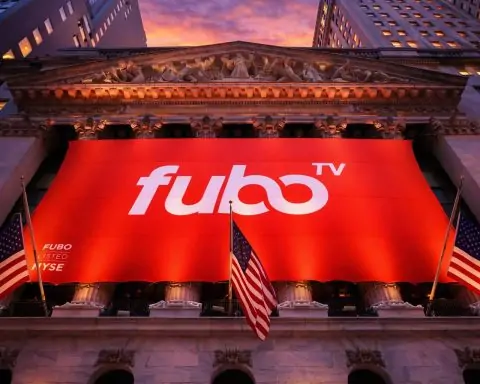- Massive 2025 Rally: QuantumScape’s stock price has skyrocketed this year – up roughly +180% year-to-date – driven by excitement around its solid-state battery technology [1]. Shares recently hit a 52-week high near $19, after trading in the $3–$4 range earlier in the year [2].
- Recent Pullback: After closing at $15.52 on October 21 (still ~+170% YTD), QS plunged ~12.6% intraday on Oct. 22 to around $13.56 [3] [4]. The steep drop – wiping out about $2 billion in market cap – came ahead of the company’s Q3 earnings report and amid broader market volatility.
- Solid-State Battery Breakthroughs: QuantumScape has made headline-grabbing technical strides. In September, a Ducati electric motorcycle prototype powered by QuantumScape’s solid-state cells demonstrated ~844 Wh/L energy density and charged from 10% to 80% in ~12 minutes [5] – a real-world demo showcasing the fast-charge, high-capacity potential of its lithium-metal batteries.
- Big-Name Partnerships: The company secured strategic partnerships with Murata Manufacturing and Corning in late 2025 to co-develop its proprietary ceramic battery separator. Analysts called the Corning deal “a major vote of confidence” in QuantumScape’s tech [6], as Corning’s ceramics expertise could accelerate mass production. Back-to-back agreements with Murata (Oct 8) and Corning (Sept 30) boosted investor optimism that QuantumScape is rapidly building a supply chain for commercialization [7].
- Upcoming Earnings & Financials: QuantumScape remains a pre-revenue R&D-stage company with no meaningful product sales yet [8]. It will report Q3 2025 results on Oct. 22 after market close, and Wall Street expects a net loss of about -$0.20 per share (similar to last quarter) [9]. The company did record ~$36.7 million in Q2 revenue (likely from collaboration agreements), but continues to burn cash developing its technology [10].
- Analysts Split on Outlook:Wall Street is largely skeptical of QS’s valuation. Most analysts rate it Hold or Sell with an average 12-month price target around $5–6 – over 50% below the current price [11]. They warn QuantumScape’s ~$9 billion market cap is based on future promise (the company still must prove it can scale production) [12]. Bulls, however, argue the recent breakthroughs aren’t fully priced in: one analysis pegs QS’s fair value near $25 (35% above today) given its tech lead and new partnerships [13] [14].
- Investor Sentiment: QuantumScape has become a popular retail investor story in 2025, with its high-risk, high-reward profile drawing enthusiastic traders. Major institutions have also taken notice – for example, Vanguard upped its stake by 9% in Q1, and UBS Asset Management increased its holdings +456% [15] [16]. However, insiders appear to be selling into strength: company filings show insiders sold about 2.3 million shares (~$27 million worth) over the last quarter [17], even as hedge funds now own roughly 30% of QS stock [18].
Stock Price & Recent Performance
QuantumScape’s headquarters in San Jose, CA. The battery startup’s stock was a top performer in 2025, surging nearly 200% amid solid-state battery hype.
QuantumScape’s stock (NYSE: QS) has seen a roller-coaster 2025. After starting the year in the single digits, QS went on an explosive run, gaining roughly 170–180% year-to-date as of mid-October [19]. The rally accelerated in late September and early October, when a string of positive announcements (detailed below) sent the stock to new heights. Shares hit an intraday peak around $16.49 by October 3 and continued upward to flirt with the $19 level soon after [20] [21]. This made QuantumScape one of the best-performing tech stocks of 2025, vastly outpacing the broader market. Momentum traders piled in during the run-up, and daily volumes spiked into the tens of millions of shares [22].
However, the euphoria cooled in the days heading into the company’s Q3 earnings date. On Tuesday, Oct. 21, QS pulled back nearly -3.9%, closing at $15.51 with lighter-than-average trading volume [23]. The next day (Oct. 22), selling pressure intensified: by midday, QS plunged about -12% to ~$13.5 [24]. This sudden drop erased roughly $2 billion in market value and underlined the stock’s volatility – QS has a beta above 4.0, meaning it swings dramatically on news and sentiment. Market observers attributed the pullback to profit-taking and jitters ahead of earnings, especially given the stock’s huge run-up and the broader market’s risk-off mood. Even after the dip, QuantumScape shares remained ~150% higher than January levels, a testament to the year’s bullish fever for anything EV-battery related.
Looking at the bigger picture, QuantumScape’s recent consolidation may also reflect a balancing of expectations. The stock’s 30%+ surge in early October pushed it well above many technical support levels, so a correction was not unexpected. Indeed, technical analysts had flagged the mid-$14s to $16 as a potential resistance zone from past trading history [25]. Now, after the pullback, QS is trading back in the mid-teens – a range that may act as a new support base if investors remain confident in the company’s long-term story. The question is whether the latest news and upcoming earnings will justify QuantumScape’s lofty valuation or if more choppy trading is in store through year-end.
Recent News: Partnerships, Breakthroughs & Catalysts
QuantumScape’s dramatic stock movements have been fueled by a series of major developments in recent weeks. The company – a decade-old Silicon Valley startup working on solid-state lithium-metal batteries – appears to be hitting inflection points on both the technology and partnership fronts, which has significantly altered market sentiment (for better and worse).
1. Groundbreaking Battery Demo: In early September, QuantumScape provided one of the clearest validations of its technology to date. At the IAA Mobility auto show in Munich, Volkswagen’s PowerCo division (a major QS investor) publicly showcased a Ducati electric racing motorcycle powered by QuantumScape’s latest prototype solid-state cells [26]. The results turned heads: the bike’s battery achieved about 844 Wh/L energy density – roughly double the energy of typical EV batteries – and charged from 10% to 80% in just ~12 minutes [27] [28]. This was the first-ever public field test of QuantumScape’s battery in a functioning vehicle, silencing some skeptics who had called the technology “lab-bound.” The successful demo bolstered QuantumScape’s credibility [29]: the cell ran for hours without overheating or significant degradation, underscoring the promise of QS’s design (an anode-free lithium-metal cell with a ceramic electrolyte). Volkswagen, which has invested over $300 million in QuantumScape to date, was sufficiently impressed – around the same time, VW’s battery subsidiary agreed to invest an additional $131 million (upon hitting milestones) to help QS scale up a pilot production line [30] [31].
2. “Cobra” Manufacturing Leap: A big part of QuantumScape’s story now is not just the battery chemistry, but manufacturing it at scale. Over the summer, the company implemented a process upgrade – code-named “Cobra” – in its ceramic separator production. According to QuantumScape, Cobra has boosted separator output by 25× compared to the prior process, a dramatic improvement aimed at transitioning from lab-scale to gigafactory-scale production by 2027 [32]. This is critical because the ceramic separator (the thin solid electrolyte layer in QS batteries) is challenging to produce in large volumes. By solving this bottleneck, QuantumScape hopes to accelerate its commercialization timeline. In fact, the company is targeting delivery of “B-sample” prototype batteries (which are closer to commercial units) in 2024–25, and a full-scale commercial launch around 2027 if all goes well [33]. Analysts note that if QuantumScape hits these milestones, it could put the company years ahead of rivals – for instance, Toyota aims to commercialize solid-state EV batteries by 2027–28, and other startups like Solid Power (SLDP) and SES are still in prototype stages [34]. QuantumScape’s recent progress suggests it is moving from what detractors once dismissed as a “science project” toward a manufacturing-focused execution phase.
3. Strategic Partnerships with Corning & Murata: Perhaps the most confidence-inspiring news for investors has been QuantumScape’s ability to attract blue-chip partners to help it industrialize. On September 30, QuantumScape announced a collaboration with Corning Inc. – the 170-year-old materials giant – to jointly develop high-volume production methods for QuantumScape’s ceramic separator [35] [36]. Corning’s deep expertise in glass and ceramics manufacturing makes it an “ideal addition” to QuantumScape’s ecosystem, said QS CEO Dr. Jagdeep Singh (Siva Sivaram) [37]. The goal is to leverage Corning’s know-how in scaling up the ceramic films, which could dramatically speed up QS’s path to commercialization. Just a week later, on October 8, QuantumScape struck another deal – this time a joint development agreement with Murata Manufacturing, a Japanese electronics firm renowned for its ceramic components [38] [39]. Murata and QuantumScape had been in talks since early 2025, and Murata’s expertise in ceramic material processing (from formulation to sintering) will help QS transition from small lab samples to large-scale separator production [40].
These back-to-back partnerships were seen as strong validation of QuantumScape’s technology and manufacturing approach. Industry analysts hailed the Corning deal especially as a “major vote of confidence” in QS [41], noting that a world-class materials company wouldn’t partner unless it saw real potential. Investors cheered: QuantumScape’s stock jumped ~15% the morning after the Corning announcement [42], and continued climbing into early October. The Murata and Corning agreements together signal that scaling production is now a company focus, not just battery science. As one report put it, these partnerships “helped boost investor confidence that [QuantumScape] is rapidly closing the gap to commercial production.” [43]
4. Policy & Industry Tailwinds: The broader EV battery sector backdrop in late 2025 also played a role in QuantumScape’s rise (and could support it going forward). Notably, in October, China announced new export licensing requirements on key battery materials and technologies – effectively tightening controls on high-end lithium-ion batteries, cathode materials, and graphite anodes from November onward [44] [45]. This development highlighted the strategic importance of domestic U.S. battery innovators like QuantumScape [46]. With geopolitical tensions and supply chain security in focus, any company that can deliver next-generation batteries on U.S. soil stands to benefit from government and industry support. In the U.S., efforts to boost domestic battery production and raw material supply (such as federal investments in lithium projects) have also created a tailwind for the sector [47]. Meanwhile, EV demand remains robust – Tesla, for instance, delivered nearly 500,000 vehicles in Q3 2025 [48] – ensuring a huge addressable market for better batteries. Solid-state technology is seen as the next leap to extend EV range, cut charging times, and improve safety, which is why every major automaker (Toyota, GM, Ford, Nissan, etc.) plus countless startups are racing to develop it. QuantumScape’s recent breakthroughs and alliances potentially put it among the frontrunners of this race. But with that opportunity comes intense pressure to execute.
Q3 Earnings and Financial Outlook
All eyes turned to October 22, 2025, when QuantumScape was set to release its third-quarter business results after the market close [49]. As a pre-revenue company, traditional earnings metrics are less significant for QS – investors are more interested in operational updates (e.g. progress on battery development, manufacturing scale, and partnerships with automakers). Nonetheless, the quarterly report is an important check-in on the company’s cash burn and any timeline changes.
Wall Street expectations: Consensus forecasts call for a Q3 net loss of around -$0.20 per share [50], slightly narrower than the -$0.23 loss a year ago. QuantumScape has no substantial revenue yet from product sales, so any reported revenue will likely be from collaborative agreements or interest income. (In Q2, QS surprised the market by recording about $36.7 million in revenue, possibly tied to a licensing or development milestone [51]. This was a first taste of income, as previous quarters saw virtually no revenue.) For full-year 2025, analysts project QuantumScape will lose roughly -$0.78 per share, improving a bit from -$0.89 in 2024 as R&D spending stabilizes [52] [53]. The company’s balance sheet is in focus too – QS had over $900 million in liquidity last quarter [54], bolstered by prior equity raises and strategic investments. This healthy cash reserve (with low debt) means QuantumScape can continue funding its development at least into 2027–2028 before needing more capital, by which time it hopes to be approaching commercial revenue [55] [56].
Key things to watch in the earnings release: Investors will be looking for updates on prototype output and testing (e.g. how many multilayer cells are being made and delivered to auto OEM partners), any revisions to the timeline for B-sample batteries or production ramp, and commentary on the new Murata/Corning partnerships (have those begun to bear fruit?). The management’s tone on the conference call could also sway sentiment – is QuantumScape on track, or are there new challenges or delays? In recent quarters, QS executives have expressed confidence that they are solving remaining technical hurdles (like defect rates in cells) and that they remain on schedule for a 2024–25 prototype ramp. Any confirmation of that, or news of additional automaker partnerships (even early-stage joint development agreements), would be taken as very bullish signs. Conversely, hints of timeline slippage, unexpected increases in cash burn, or vague progress reports might reinforce the cautious outlook that many analysts still hold.
Given the stock’s big run-up, even a small disappointment or lack of new info could trigger a sell-the-news reaction – which perhaps was already starting with the pre-earnings pullback. The stakes are high: QuantumScape’s valuation assumes eventual success in bringing solid-state batteries to market. Until tangible revenue and products appear, earnings days will continue to be more about narrative and milestones than earnings per se. As Benzinga noted, “investors will scrutinize the report for updates on technological milestones, progress with automotive partners, and [the] path to commercialization” rather than near-term profit metrics [57]. In short, QuantumScape’s quarterly results are less about what just happened and more about what’s coming next.
Analyst Ratings and Investor Sentiment
Despite QuantumScape’s exciting story and stock momentum, Wall Street’s opinion remains deeply divided. Traditional equity analysts, focusing on fundamentals, mostly see an overvalued stock – while growth-focused investors and retail traders see a potential game-changer in the EV industry.
Wall Street consensus: According to MarketBeat and TipRanks data, the majority of analysts rate QS a Hold or Sell at this point [58] [59]. Out of perhaps 8–10 analysts covering QS, none have a strong buy rating. In fact, multiple firms have warned on QS over the past year. For example, Weiss Ratings reiterated a “Sell (D-)” on Oct. 8 [60], citing the company’s high valuation and execution risks. On the more optimistic end, in July Robert W. Baird upgraded QS from Underperform to Neutral and raised its price target from $6 to $11 [61] – a notable boost, but still well below the current market price. Overall, the average 12-month price target sits in the mid-single digits. One compilation put the consensus target around $5.88 [62], implying ~60% downside from the ~$15–16 range. Another source lists the average target at about $7.33 (with one lone Buy rating vs. several Holds/Sells) [63]. The exact number varies, but the message is clear: analysts think QS has run far ahead of its fundamentals. They point to the fact that QuantumScape’s market cap (around $8–9 billion) is enormous for a company with no commercial revenue and that any hiccup in development could trigger a big correction.
Analysts also frequently compare QuantumScape to its peers and predecessors. Solid-state batteries are something of a “holy grail” in the industry, but many companies have tried and struggled to commercialize them. Some on Wall Street emphasize that competition is rising – for instance, Toyota, BMW, and others are pouring resources into solid-state R&D – and skepticism is warranted until QuantumScape proves its cells can be mass-produced reliably and at acceptable cost [64]. A Forbes analysis ahead of earnings bluntly asked if investors should “Sell QS stock before earnings”, noting the company’s ongoing losses and the history of volatility around its news events [65]. In summary, the prevailing professional sentiment is cautious: acknowledge the technology potential, but question the valuation and timeline.
Bullish voices: In contrast to the wary consensus, there are a number of bullish investors and commentators who remain convinced that QuantumScape could be a big winner in the long run. These bulls argue that QuantumScape’s recent achievements indicate real progress that the market’s conservative models don’t fully capture. For example, tech investment site Simply Wall St recently suggested QS might be 35% undervalued even after its rally, estimating a fair value of around $25 per share based on projected future cash flows and successful commercialization [66] [67]. The bullish thesis is that if QuantumScape’s battery can deliver double the energy density, faster charging, and improved safety, the company could capture a sizable chunk of the EV battery market in the late 2020s, more than justifying the current valuation. A 24/7 Wall St. report on Oct. 22 went as far as predicting QuantumScape “will soar over the next 3 years,” arguing that its partnerships and the Cobra manufacturing upgrade position it ahead of competitors in the solid-state race [68] [69]. That piece highlighted QS’s 500 Wh/kg cell chemistry and ability to charge to 80% in 15 minutes as revolutionary for EV adoption, and noted the company’s cash runway (≈$1 billion) gives it the chance to reach commercialization by 2027 without needing dilutive funding [70] [71]. In short, bulls see QuantumScape as a potential “Next Tesla” of batteries – a high-risk, high-reward bet on a breakthrough that could reshape an industry.
Retail investor sentiment: It’s important to note that QuantumScape has a strong following among retail investors, including communities on social media and trading forums. All year, QS has been a trending ticker on platforms like Reddit’s r/WallStreetBets and various EV/battery stock groups. Many retail traders are drawn to the stock’s volatility and story, seeing it as a chance to get in early on transformative tech. This retail enthusiasm has at times created a self-reinforcing cycle – as the stock price climbed, more traders piled in, which further boosted the price. By some estimates, only ~30% of QuantumScape’s shares are held by institutions [72], meaning the float is significantly influenced by retail activity. In 2025, that has worked in QS’s favor (few stocks on the NYSE have surged 3× like QS did). However, retail sentiment can be fickle; a turn in the narrative could just as easily see momentum swing the other way. Recent discussion on QuantumScape-centric forums shows a mix of euphoria and caution – some users are celebrating the Murata and Corning deals as “laying the groundwork to produce a huge number of [battery] separators,” while others warn that insiders selling shares and analyst downgrades could signal trouble ahead [73] [74].
On the insider front, as mentioned, several top executives and early investors have cashed out portions of their holdings during 2025’s rally. For instance, board director JB Straubel (former Tesla CTO) sold ~157,000 shares in September (about 31% of his stake) [75], and the CTO Timothy Holme sold ~176,000 shares that month as well [76]. In total, insiders dumped over 2.3 million shares in the last three months [77]. While insider selling can happen for many reasons (personal finances, etc.), such sizable sales amid a soaring stock raise eyebrows. It suggests that even those closest to the company acknowledge the stock’s rich valuation. Bulls counter that insiders still retain significant ownership and that these sales were prudent profit-taking. Going forward, watching insider trading, institutional moves, and retail chatter will be key to gauging sentiment shifts on QS.
Industry Context: The EV Battery Arms Race
QuantumScape doesn’t operate in a vacuum – it’s one contender in a global race to develop next-generation batteries. Understanding the industry backdrop helps in assessing QS’s prospects and the significance of its recent news.
Solid-state battery landscape: Solid-state batteries (SSBs) have long been seen as the eventual successor to today’s lithium-ion batteries, promising superior energy density, faster charging, and improved safety by using a solid electrolyte instead of flammable liquid. However, SSBs have faced challenges in materials and manufacturability, keeping them mostly in labs. 2025 has been a pivotal year for SSB development, with several notable milestones:
- Toyota announced progress on its solid-state program, targeting commercialization in 2027–2028 for next-gen EVs [78]. The Japanese automaker claims to have a design with ~20% higher range and much quicker charging, though specifics are scarce and many analysts are skeptical of the timelines.
- Nissan is aiming for 2028–2029 to deploy solid-state batteries in a production model [79], having built a pilot production line in Yokohama. Other Asian players like Panasonic and Samsung are also researching SSB tech, often in collaboration with automakers.
- Startups and pure-plays: Aside from QuantumScape, companies like Solid Power (NYSE: SLDP) and SES AI (NYSE: SES) are pursuing solid-state or lithium-metal battery solutions. Notably, Solid Power (backed by Ford and BMW) is taking a different approach by supplying its solid sulfide electrolyte material for automakers to test in their own prototype cells. Solid Power delivered 20-layer test cells to BMW this year but also faced delays, and its stock has lagged QS. SES, a spin-off from MIT, is focusing on a hybrid lithium-metal battery and aiming for automotive “A-sample” testing with GM and Hyundai. Both SLDP and SES saw their shares jump in sympathy with QS’s rally in early October (Solid Power +7%, SES +17% on Oct. 3) [80] [81], reflecting how QuantumScape’s news ignited optimism across the solid-state niche.
- Legacy battery giants: Contemporary Amperex Technology (CATL) from China and LG Energy Solution from Korea – the world’s top Li-ion battery producers – have also announced R&D in solid-state tech. CATL is reportedly developing a semi-solid (hybrid) battery with high energy density that could reach limited production before pure solid-state does. These giants have enormous resources and existing factories, which could pose a competitive threat if QuantumScape lags in commercialization.
In this context, QuantumScape’s edge is that it appears to be one of the first to demonstrate a viable multilayer solid-state cell in real-world conditions (the Ducati demo) and is aggressively addressing manufacturing scale-up via partnerships. Its ties with Volkswagen (which has a large order agreement contingent on successful prototypes) could provide an instant customer when the batteries are ready. By contrast, many competitors either have the tech but not the production plan, or vice versa. Of course, competitors could still catch up – for instance, if Toyota’s solid-state battery hits the market in 2028 as planned, it might directly challenge QuantumScape’s entry around 2027. There’s also the risk that incremental improvements to conventional lithium-ion batteries (like Tesla’s 4680 cells or advances in high-silicon anodes) could narrow the performance gap, making it harder for expensive solid-state cells to justify their cost. Tesla’s CEO Elon Musk has been notably cool on solid-state, focusing instead on improving current tech and even experimenting with alternatives like lithium-iron-phosphate for affordability.
Market size and demand: The potential reward for cracking solid-state batteries is enormous. The EV battery market is already well over $30 billion annually and growing fast. Solid-state batteries could unlock new applications and mass EV adoption due to their superior specs. According to one forecast, the global solid-state battery market, though tiny today (~$0.3 billion in 2024), could grow to $3.4 billion by 2033 (a 10× increase) as automakers begin adopting the technology [82] [83]. And that may be conservative if solid-state enables new products (for example, safer batteries for airplanes, or ultra-compact batteries for consumer electronics). QuantumScape, with its licensing-friendly business model, aims to either supply its ceramic separators or license its cell tech to major battery manufacturers, rather than build dozens of gigafactories all on its own. This “asset-light” strategy could allow it to scale revenue faster if its tech proves itself. Of course, the flip side is that larger players could license someone else’s solid-state chemistry or innovate around QS.
Regulatory and economic factors: As mentioned, geopolitical moves like China’s export restrictions on battery tech can reshuffle the competitive landscape. China currently dominates battery material refining and cell production. If exports of advanced battery components become restricted, Western automakers will be even more eager to secure domestic high-performance batteries – a positive for QuantumScape if it’s ready in time. Governments in the US and Europe are also incentivizing local battery production through subsidies and grants (e.g. the US Inflation Reduction Act offers hefty credits for US-made batteries). QuantumScape’s planned manufacturing (likely in the U.S., at least initially for VW) could qualify for such support, further improving its economics. Meanwhile, environmental and safety regulations could create a tailwind for QS’s design: solid-state cells are non-flammable (no liquid electrolyte) and potentially more recyclable, aligning with regulators’ and consumers’ growing focus on battery safety and sustainability.
In summary, QuantumScape is racing in a crowded yet lucrative field. The company’s recent moves – tech demonstrations, process improvements, and partnerships – have strengthened its hand in this race, according to many observers. But the finish line (mass production of a reliable solid-state EV battery) is still a few years away, and competitors are not standing still. How well QuantumScape executes in the next 18–24 months, and whether it can maintain its technology lead, will determine if it can actually convert its early promise into a lasting commercial advantage in the EV battery arms race.
Outlook: Hype vs. Execution
After a whirlwind 2025, QuantumScape finds itself at a crossroads between exhilarating potential and sobering reality. On one hand, the company’s solid-state battery breakthroughs and high-profile partnerships have de-risked key aspects of its journey – lending credibility to its technology and laying a path toward manufacturing at scale [84] [85]. The stock’s sharp rally reflects a growing belief that QuantumScape might overcome challenges that have stumped battery developers for decades. Optimists envision that within a few years, QuantumScape’s cells could be powering Volkswagens, drastically cutting EV charging times and boosting driving range, all while QuantumScape earns licensing fees or joint venture profits. In this scenario, QS’s current ~$15 share price could look like a bargain in hindsight.
On the other hand, risks remain plentiful. The company must still prove it can produce thousands, then millions, of defect-free cells consistently – something that can trip up even experienced manufacturers. Any delay in scaling the separator production (despite Cobra, Murata, and Corning’s help) could push commercialization out and temper the market’s enthusiasm. There’s also the broader market context: high-growth, pre-revenue stocks like QS can be very sensitive to interest rates and investor risk appetite. If market conditions turn, QuantumScape’s valuation could compress regardless of its execution. Notably, short interest in QS has been elevated at times, indicating some traders are betting on a decline if the hype fades.
Bottom line: QuantumScape enters late 2025 with unprecedented momentum in the solid-state battery race. The next milestones – from its Q3 report and conference call, to delivering B-sample batteries in 2024, to potentially signing on an automaker customer beyond VW – will be crucial in determining whether the stock’s amazing run can continue. As one analyst put it, “QuantumScape’s lofty $9B+ valuation hinges on future technical success… the company must prove its technology at scale to justify the hype.” [86] The coming quarters will require QuantumScape to transition from proving its science to proving its business. If it can bridge that gap, the payoff could be transformational. If not, the market may not be so forgiving of a stock priced for perfection. For investors and EV enthusiasts alike, QuantumScape remains a high-voltage story to watch – a potential battery revolution in the making, now striving to turn bold promises into commercial reality.
Sources: Recent market data and company news from Yahoo Finance, MarketBeat, Benzinga, Simply Wall St, Business Wire press releases, TipRanks, 24/7 Wall St., and QuantumScape’s own reports [87] [88] [89] [90] [91] [92]. These provide the latest details on QuantumScape’s stock performance, strategic partnerships, technological milestones, and Wall Street’s outlook as of Oct. 22, 2025. All information reflects developments and sentiment up to that date.
References
1. 247wallst.com, 2. www.benzinga.com, 3. www.marketbeat.com, 4. www.ainvest.com, 5. ts2.tech, 6. ts2.tech, 7. www.tipranks.com, 8. ts2.tech, 9. www.benzinga.com, 10. www.marketbeat.com, 11. ts2.tech, 12. ts2.tech, 13. simplywall.st, 14. simplywall.st, 15. www.marketbeat.com, 16. www.marketbeat.com, 17. www.marketbeat.com, 18. www.marketbeat.com, 19. 247wallst.com, 20. ts2.tech, 21. www.benzinga.com, 22. ts2.tech, 23. www.marketbeat.com, 24. www.ainvest.com, 25. ts2.tech, 26. ts2.tech, 27. ts2.tech, 28. ts2.tech, 29. ts2.tech, 30. ts2.tech, 31. ts2.tech, 32. 247wallst.com, 33. 247wallst.com, 34. ts2.tech, 35. batteriesnews.com, 36. batteriesnews.com, 37. batteriesnews.com, 38. www.tipranks.com, 39. www.tipranks.com, 40. www.tipranks.com, 41. ts2.tech, 42. ts2.tech, 43. www.tipranks.com, 44. www.mayerbrown.com, 45. www.reuters.com, 46. www.benzinga.com, 47. ts2.tech, 48. 247wallst.com, 49. ir.quantumscape.com, 50. www.benzinga.com, 51. www.marketbeat.com, 52. www.barchart.com, 53. www.barchart.com, 54. 247wallst.com, 55. 247wallst.com, 56. 247wallst.com, 57. www.benzinga.com, 58. www.marketbeat.com, 59. www.tipranks.com, 60. www.marketbeat.com, 61. www.marketbeat.com, 62. www.marketbeat.com, 63. www.tipranks.com, 64. ts2.tech, 65. www.forbes.com, 66. simplywall.st, 67. simplywall.st, 68. 247wallst.com, 69. 247wallst.com, 70. 247wallst.com, 71. 247wallst.com, 72. www.marketbeat.com, 73. www.marketbeat.com, 74. www.marketbeat.com, 75. www.marketbeat.com, 76. www.marketbeat.com, 77. www.marketbeat.com, 78. ts2.tech, 79. ts2.tech, 80. ts2.tech, 81. ts2.tech, 82. www.tipranks.com, 83. www.tipranks.com, 84. seekingalpha.com, 85. mlq.ai, 86. ts2.tech, 87. www.marketbeat.com, 88. ts2.tech, 89. batteriesnews.com, 90. www.tipranks.com, 91. 247wallst.com, 92. ts2.tech
